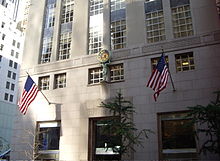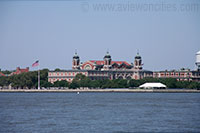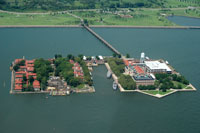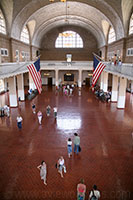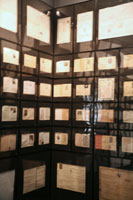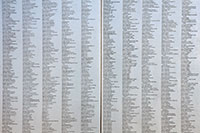Central Park, an 843-acre rectangle of open space in the middle of Manhattan, was created in the 1860s and ’70s by Frederick Law Olmsted and Calvert Vaux on the marshy northern fringe of the city, the immense park was designed as a leisure space for all New Yorkers, regardless of color, class or creed. And it’s an oasis from the insanity: the lush lawns, cool forests, flowering gardens, glassy bodies of water and meandering, wooded paths providing the dose of serene nature that New Yorkers & visitors crave.
Dedicated in 1894, this bronze sculpture is a posthumous replica of a
marble self-portrait carved by the famed Danish sculptor. It is the only
statue of an artist displayed in a New York City park.
Alice and her cast of storybook friends found their way to Central Park
in 1959, when philanthropist George Delacorte commissioned this bronze
statue as a gift to the children of New York City. Inspired by the zany
characters of the Lewis Carroll classic Alice in Wonderland,
the sculpture was also meant as a tribute to his late wife, Margarita,
who read Alice to their children. Engraved around the statue are lines
from his nonsensical poem, The Jabberwocky.

Rising from Bethesda Terrace is Bethesda Fountain, with the famous Angel
of the Waters statue atop. The statue references the Gospel of John,
which describes an angel blessing the Pool of Bethesda and giving it
healing powers. The fountain commemorates the Croton water system, which
first brought fresh water to New York City in 1842. The angel carries a
lily in her left hand -- a symbol of the water's purity, very important
to a city that had previously suffered from a devastating cholera
epidemic before the system was established. The piece is the only statue
that was commissioned for the Park. Created by Emma Stebbins, it also
marked the first time a woman received a public art commission in New
York City.

892 was marked by celebrations of the 400th anniversary of Columbus's
arrival in the Americas and the dedication of Gaetano Russo's Columbus
Circle stone monument in Central Park. The Russo monument shows Columbus
looking outward with his hand on the tiller of his ship, while the
Sunol monument portrays a more spiritual explorer with his outstretched
arm and eyes looking upward to heaven in gratitude for his successful
voyage. Sunol modified this sculpture from one he had done in 1885 in
the Plaza de Colon in Madrid.

The Delacorte Musical Clock brings sweet seasonal chimes on the half
hour to a nook of the Park beloved by generations of families. Near the
entrance of the Children's Zoo, the clock was dedicated in 1965 with
funding from philanthropist George T. Delacorte. It sits atop a
three-tiered tower and features a band of whimsical animals: two bronze
monkeys banging hammers against a bell; a penguin on drum; a hippo on
violin; a bear and his tambourine; a concertina-playing elephant; a goat
with pipes; and a kangaroo on horn.
Curving gracefully over the narrow neck of the Pond at 59th Street,
Gapstow is one of the iconic bridges of Central Park. Design aficionados
might notice a striking resemblance to the Ponte di San Francesco in
San Remo, Italy.
Hans Christian Andersen (1805-1875) is best known for his children's stories such as The Emperor's New Clothes, The Little Mermaid and The Ugly Duckling.
Like the Alice in Wonderland sculpture nearby, Hans Christian Andersen
is meant to be climbed on. The two favorite spots for climbing are on
top of the open book displaying the opening lines of The Ugly Duckling
and on the freestanding duck. The memorial cost $75,000, contributed in
part by Danish and American schoolchildren. The remainder was raised by
the Danish-American Women's Association to commemorate the 150th
anniversary of Andersen's birth.
The iconic Loeb Boathouse that New Yorkers and visitors know so well
today opened at the Lake's northeastern tip in 1954, financed by
philanthropist Carl M. Loeb. From beneath the green patina of the
boathouse's copper roof, visitors can rent rowboats and bikes; hire an
authentic Venetian gondola; or dine overlooking seasonal views of the
Lake at the Loeb Central Park Boathouse Restaurant.
It was raining so hard the day Robin and I was walking through the park that this was the only restaurant we could get to without dropping from exhaustion. They did look at us strange when we asked for a table dripping wet; then we had to pay $25 for fish and chips, but they were good.
The Lehman Gates were donated by Governor and Mrs. Herbert H. Lehman in
honor of their 50th wedding anniversary upon the opening of the Tisch
Children's Zoo in 1961. Designed by Paul Manship, the sculptor of one of
the more elaborate gates at the Wildlife Conservation Center in the
Bronx (the Bronx Zoo), the animals, birds, and boys are interwoven in a
fanciful scrolling lintel.
The entrance to the Delacorte Theatre is guarded by two life-size sculptures, The Tempest and Romeo and Juliet, which feature characters from Shakespeare's plays. Romeo and Juliet
depicts the lovers as they are about to kiss, with Romeo bending over
Juliet whose head is thrown back. The simplicity of the sculpture lends
additional innocence to the moment.
Strawberry Fields is a living memorial to the world-famous singer,
songwriter and peace activist – John Lennon. During his career with the
Beatles and in his solo work, Lennon's music gave hope and inspiration
to people around the world. His campaign for peace lives on,
symbolized at Strawberry Fields.
The Falconer depicts both a human figure, clad in Elizabethan
dress, and a falcon, representing the union and communion between a bird
of prey and man.
Such a beautiful park; there's so much to see, these pictures are only a drop int the bucket. The only day that it rained the whole day during our trip to New York in October was the day we went to Central Park. Even in the rain it was magnificent!
 City Park located in New Orleans, Louisiana is home to their own resident black swan,
Amanda Erika. Amanda was injured by at least one individual, and all six of
her eggs that she had been nesting were broken.
City Park located in New Orleans, Louisiana is home to their own resident black swan,
Amanda Erika. Amanda was injured by at least one individual, and all six of
her eggs that she had been nesting were broken.





















